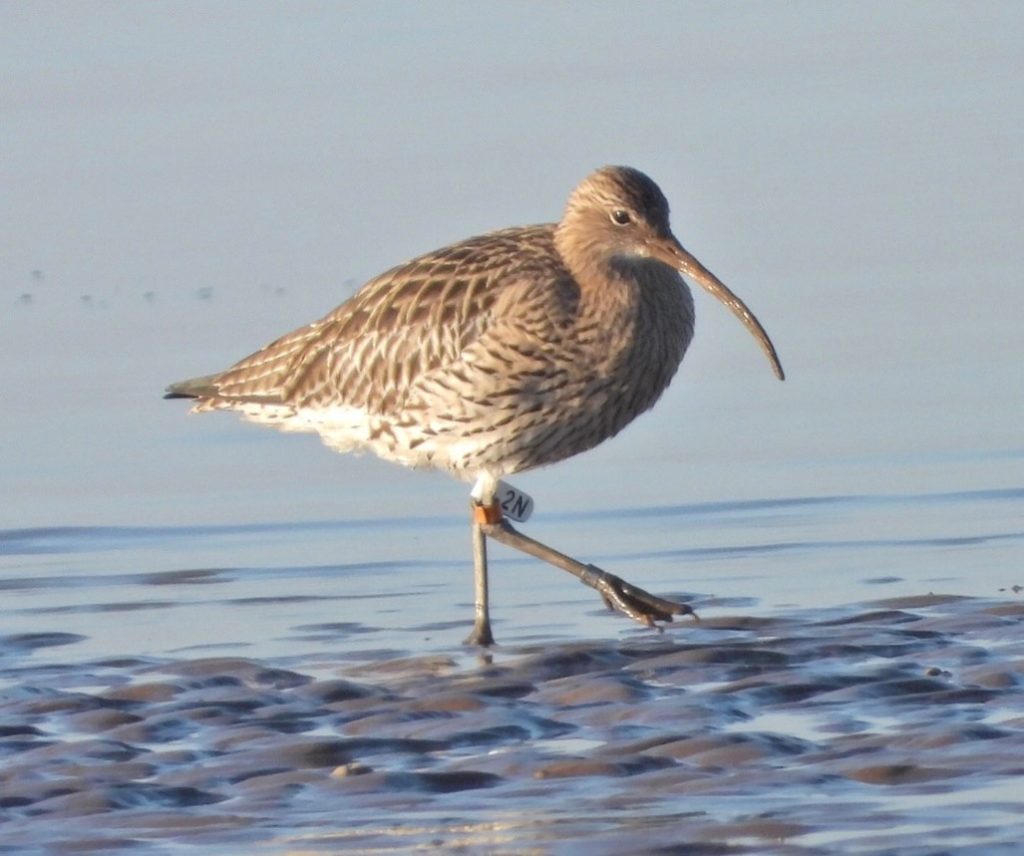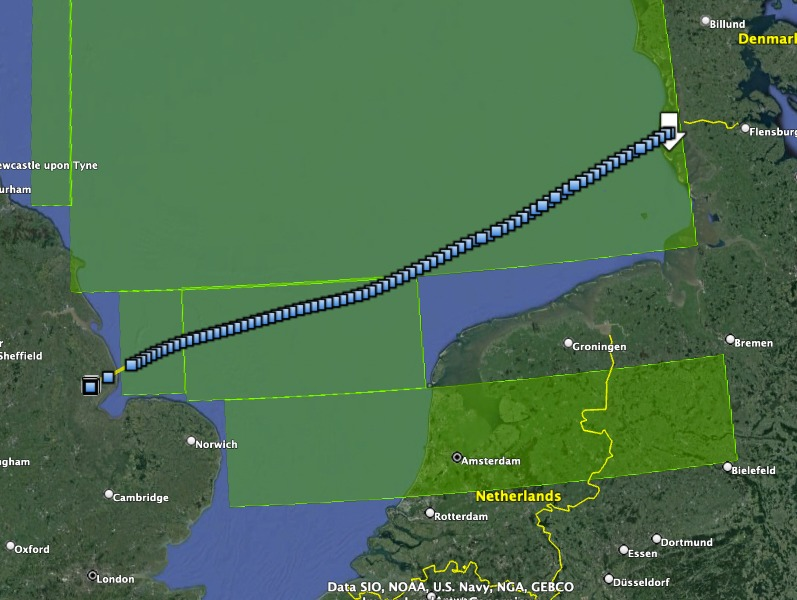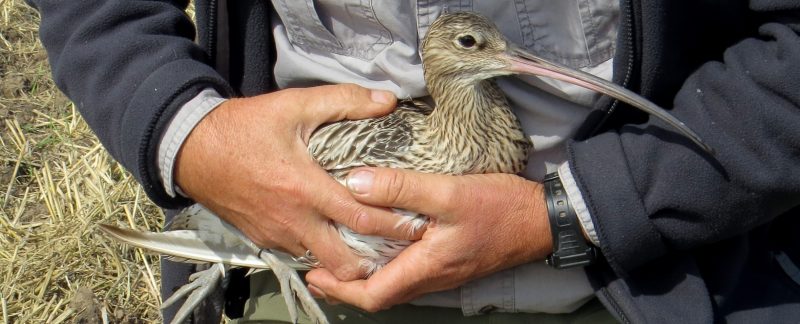Curlew are declining so alarmingly that they are now ‘Red-Listed’ as birds of conservation concern. The Wash is one of the two main UK sites for both passage and wintering Eurasian Curlew (the other being Morecambe Bay – WeBS data). Autumn passage birds use the intertidal mudflats to feed on polychaete worms, shellfish and Green Crabs. Some birds will move on to smaller sites around the Norfolk coast, the southwest of England, and northwest France. Here they will spend the winter before returning to their breeding grounds. The majority of Curlew using the Wash breed in Finland and Sweden, a migratory journey of over 1,000 miles. There is more background information on our Curlew page.
One might wonder how we know so much about the Curlew using the Wash. The Wash Wader Research Group have been pioneering Curlew studies for over 60 years. During the highest tides of August and September, Curlew use temporary high tide inland roosts to wait for the intertidal mudflats to uncover. This allows their capture and study, with provision of metal BTO rings, leg flags and, for a few, tracking devices. Biometric measurements allow the sex of a proportion of birds to be identified (males have shorter length bills) and their condition to be assessed. We have summarised our Curlew work in this blog.
Long-term studies are essential in investigating Curlew population dynamics. We know from metal ring recoveries that Curlew can live for over 30 years. As ringing studies have been undertaken on Curlew for over 50 years on the Wash, we are able to see how their survival has changed and understand the impact of rare events such as unusually severe weather.
We have now been individually marking Curlew for over a decade to help us to work our survival rates and add to our knowledge of their movements. This has shown us that distinct subpopulations of Curlew use the Wash and surrounding land in different ways over the year. This continues to be an active area of fieldwork within the group.

Both our metal ring studies and leg-flag studies have been used in collaboration with other groups in the UK to investigate Curlew population declines, published in a recent paper. The survival of adult Curlew is not currently contributing to population declines, with annual survival over 90%. However, at a time when breeding success is low it is vital that we continue to monitor the annual survival rate of Curlew as a fall could precipitate a catastrophic collapse in the Curlew population.
Increasing breeding Curlew populations in the UK will require higher chick survival (and thus greater ‘recruitment’ into the adult population). A variety of initiatives are currently underway to address this issue, with several WWRG members also involved in the national Curlew Recovery Program. One initiative is to provide electric fencing around nesting Curlew to deter predators. Another is to ‘headstart’ birds from the egg stage (using eggs that would otherwise have been destroyed) and rear them to when they have fledged and can be released safely. ‘Headstarted’ Curlew have been released on the fields around the Wash and many have been seen with our flagged adult population during WWRG fieldwork. They are distinguished by having yellow engraved flags as opposed to white.
Our regular fieldwork will provide key contributions to these projects over the next few years. A further ‘work in progress’ is our current tagging project on Wash Curlew – the tags record where the bird is and ‘report back’ via the telephone system. Our leg flag project has already shown that there are different Curlew populations around the Wash which vary in habitat use. Attaching tags allows fine details of the movement of individual Curlew to be seen, showing us which fields and shorelines they favour and then they use them. More spectacularly, a Curlew tagged in Lincolnshire in 2022 migrated across the North Sea (a distance of 560 km) in four hours! This was greatly assisted by a strong tailwind, but even so is mightily impressive for our heaviest wader.

So there you have it: a round-up of past and current Curlew projects on the Wash. We hope our work highlights how internationally important the site is for Curlew. Disruption to its intertidal mudflats and surrounding shores could result in catastrophic population collapse.
Thanks to Rob Pell for writing this blog.

